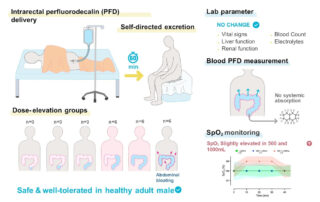Restoring the Gold Standard to Science
You don’t have to agree with every word of the President’s executive order on “Restoring Gold Standard Science”, but here’s something we should all agree on: science only earns trust through transparency, rigor, and integrity

The first paragraph of the Restoring Gold Standard Science EO gets straight to the point:
Over the last 5 years, confidence that scientists act in the best interests of the public has fallen significantly. A majority of researchers in science, technology, engineering, and mathematics believe science is facing a reproducibility crisis. The falsification of data by leading researchers has led to high-profile retractions of federally funded research.
While we could quibble over what “significantly” means, there’s little doubt that confidence has fallen quite a bit (a point I made in an earlier article). What’s more important, however, is that this isn’t a single point of failure, but a confluence of factors contributing to this erosion. Some are governmental, but others like commercial profiteering, lazy media coverage, social media conspiracies, and gaming of the peer review system, are playing a role as well. Collectively they’re adding up to a growing public cynicism regarding the trustworthiness of science. Given that the public funds the lion’s share of research, this isn’t good.
A Return to Rigor
The president’s order instructs the Director of the Office of Science and Technology Policy (OSTP) to coordinate with the heads of relevant agencies and issue guidance on the implementation of “Gold Standard Science.” This includes, among other things, science that is reproducible, transparent, communicative of error and uncertainty, and without conflicts of interest.
In other words, let’s get back to science the way it used to be: skeptical, collaborative, unbiased, and subject to revision.
It’s unfortunate that this order is even necessary (and some would argue that it isn’t), but, having studied the issue as much as I have, I think it’s a sign of the times. Somewhere over the past decade the pursuit of science purely for science has been pushed aside for pursuits that are more immediate, more profitable, or more politically expedient. I’m not entirely sure how we got here—whether it was the race for publication, the perverting influence of industry funding, or the well-intended but ultimately distorting effects of open-access publishing—but the result is clear: scientific integrity took a back seat.
And once that happened, the entire ecosystem began to tilt. Peer review became performative. Retractions became scandals instead of learning moments. Data went missing or was massaged to fit conclusions. And worst of all, scientists who dared to challenge flawed work or point out inconsistencies were labeled as denialists, or worse, silenced altogether.
This is how trust erodes. Not all at once, but incrementally. And the only way to rebuild it is to return to a culture where questioning, revising, and admitting we don’t yet know something is seen as a strength, not a weakness.
If we want science to regain its place as a guiding force in society, we don’t need it to be perfect. We need it to be honest. Transparent. Willing to change its mind. We need to reward the pursuit of truth over the performance of certainty.
There’s no such thing as “settled science”—and that’s a good thing. Real science never stops asking questions, never stops testing assumptions, and never pretends to have all the answers. Neither the scientific community nor the public expects perfection. But they do expect honesty and humility. If this executive order gets us one step closer to restoring that kind of culture, it’ll be a win not just for science, but for all of us who depend on it.
Whether or not you believe the president’s executive order was necessary, we should all be able to agree on this: integrity and rigor in scientific research are non-negotiable. Public funding is the lifeblood of most science, and if we expect the public to continue supporting it, then our standards can’t just be high—they have to be golden.
Share This →
One Comment
Leave A Comment
You must be logged in to post a comment.







[…] affect researchers, they also slow the pace of medical breakthroughs. At Siensmetrica, we believe reform is essential, but so is giving scientists better tools to navigate today’s overwhelming research […]